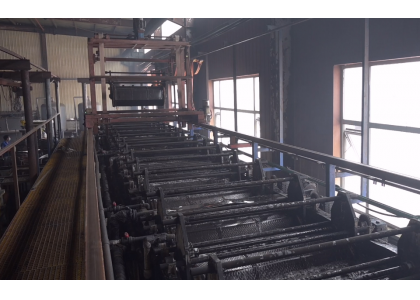
Hot-dip galvanizing (hot-dip galvanizing) is currently one of the most effective anti-corrosion means, its low cost, durable, so hot-dip galvanizing fasteners in automotive, construction, home appliances, chemical industry, machinery, petroleum, metallurgy, transportation, electric power, aviation, Marine engineering, light industry and other fields are widely used.
Hot dip galvanizing is a process in which steel fasteners are immersed in molten zinc liquid to obtain a metal covering layer. The principle is to allow the molten zinc liquid to react with the iron matrix to produce an alloy layer, so that the matrix and the coating are combined. It is first to acid wash the steel fasteners to remove the iron oxide on the surface, and then into the hot dip aqueduct. The hot dip galvanizing layer has uniform coating, strong adhesion and long service life.
Specifically, when the steel fastener is immersed in the molten zinc liquid, the first zinc and α-iron (body-centered) solid melt will be formed on the interface, then a matrix metal iron is dissolved in a solid state of zinc atoms formed by a crystal. When zinc reaches saturation in the solid melt, the two elements of zinc and iron come from mutual diffusion, and the zinc atoms that penetrate into the iron matrix migrate in the matrix lattice, and gradually form the iron-zinc alloy. When the fastener spills from the zinc liquid, the surface will form a pure zinc layer.